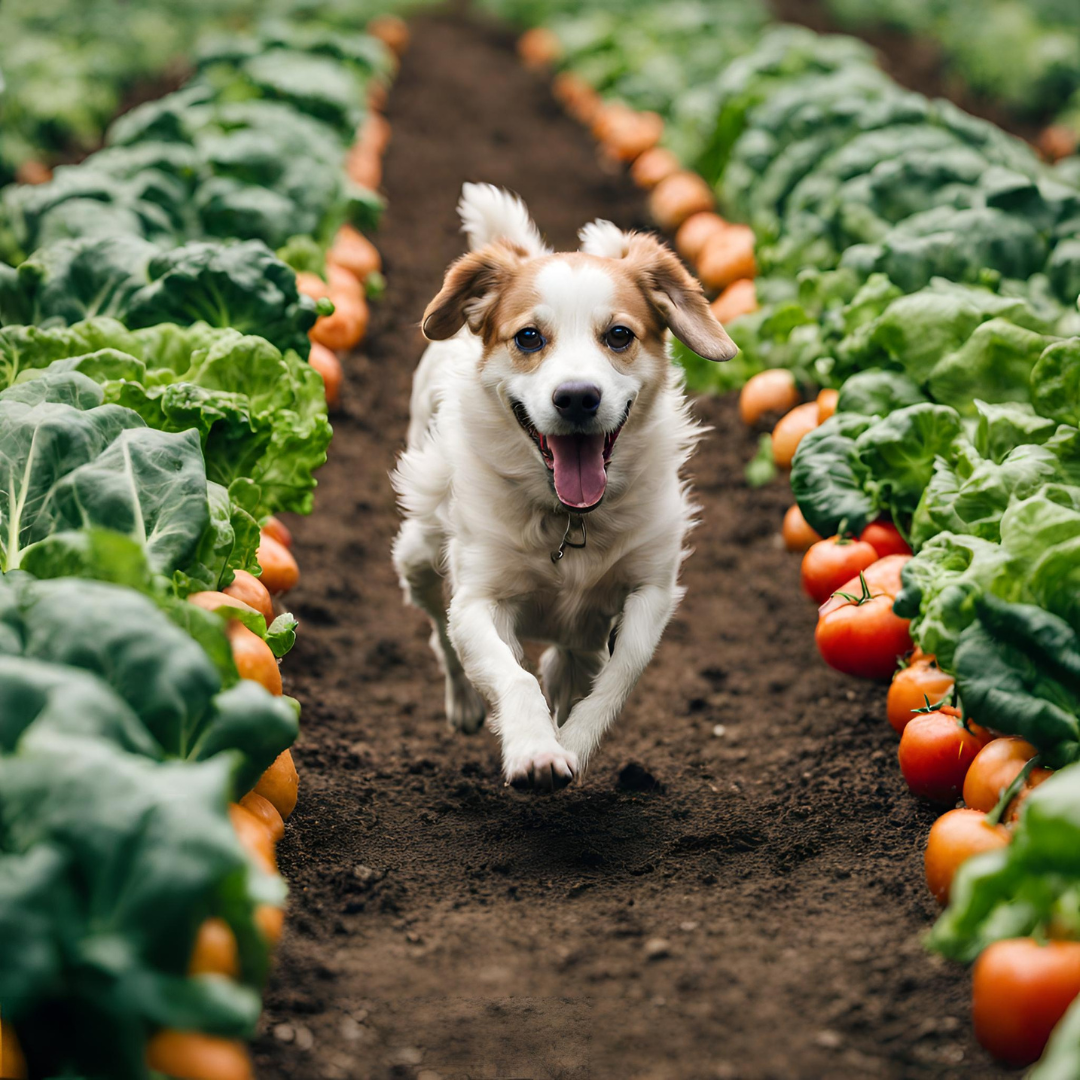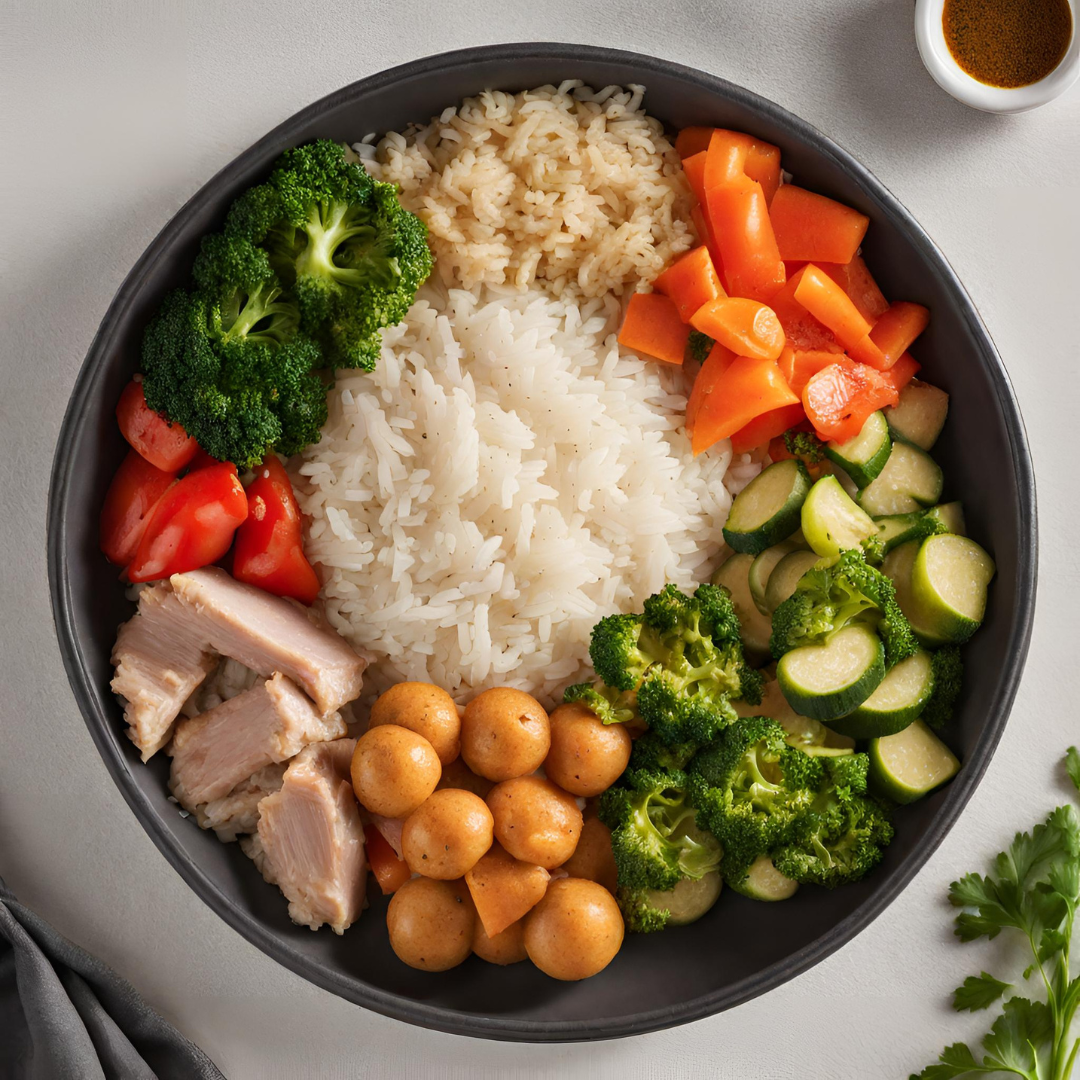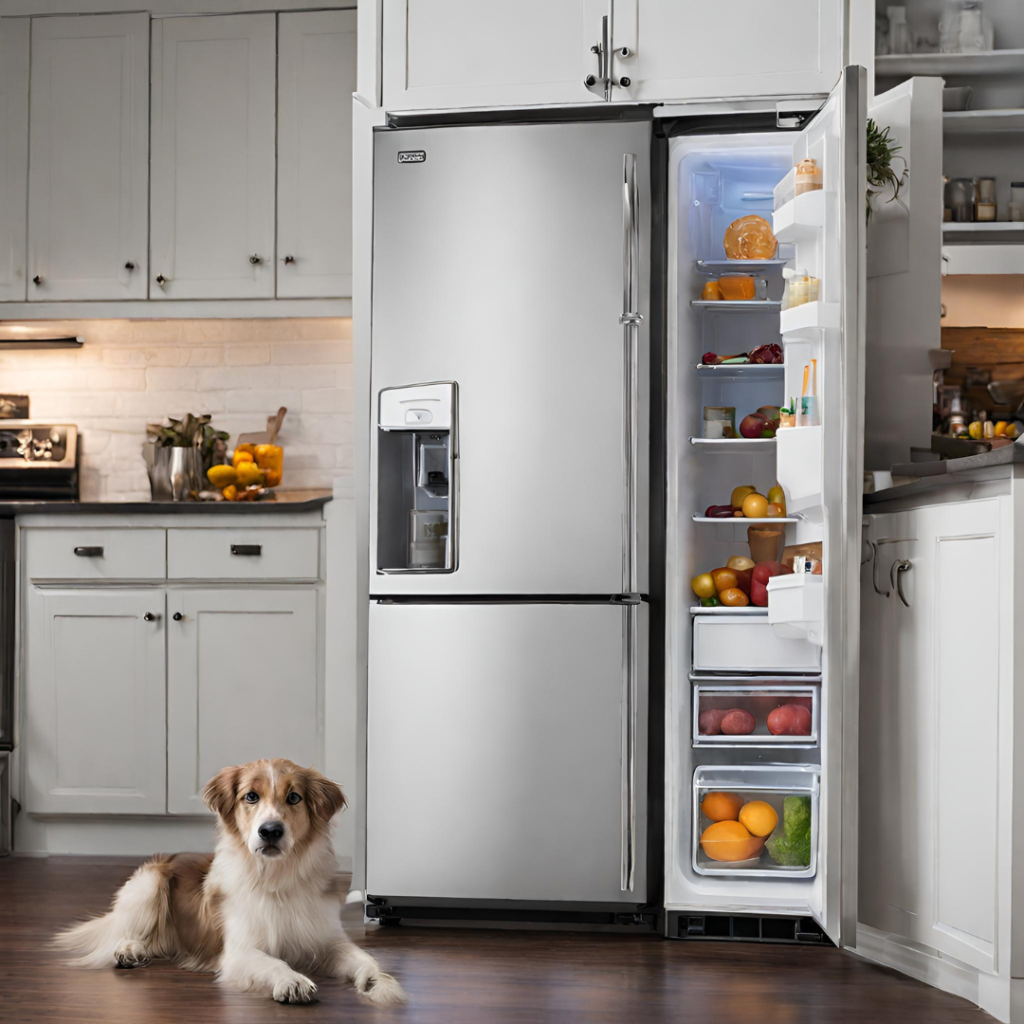
Hey! I’m Kevin—an aficionado of canine cooking delights, bringing a touch of fun to your fur fam dining experience! 🌟 Tired of throwing away uneaten expensive store bought “high-end” dog food, I decided to simplify my life by creating a one-stop-shop website for all my favorite recipes that my pups gobble down! 🍖🍽️
Should you switch to fresh dog food?

Talk to your vet.
I am here to provide delicious and nutritious recipes, and I will defer important diet advice to your veterinary health care professional. The recipes found on this website are intended for intermittent feeding purposes only.
Explore finding a Holistic Vet.
Holistic veterinarians consider aspects like the pet’s lifestyle, emotions, and environment when making treatment decisions, aiming to enhance overall well-being and help pets thrive. The American Holistic Veterinary Medical Association (AHVMA) is a great resource to explore.
Considering switching to fresh dog food?

As a certified canine nutritionist with a passion for crafting delicious and nutritious dog food recipes, I understand the importance of providing our furry friends with wholesome meals. While I enjoy sharing my culinary creations, I emphasize the significance of seeking professional guidance from veterinarians for tailored nutrition advice. Every dog is unique, with specific dietary needs, and a vet can offer personalized recommendations based on individual health conditions, age, and size. It’s crucial to consult with a qualified veterinary professional to ensure your dog’s diet aligns with their specific requirements.
The American College of Veterinary Nutrition (ACVN) warns that your dog’s unique nutritional requirements will depend on the age, size, health, and breed. Also, there are dogs for whom a homemade diet may not be appropriate or might even be damaging.
Talk to your vet. I am here to provide delicious and nutritious recipes, and I will defer important diet advice to your veterinary health care professional. The recipes found on this website are intended for intermittent feeding purposes only.
Foods that are good for dogs

Feeding your dog a balanced and nutritious diet is essential for their overall health. Here’s a breakdown of different food categories that are generally considered safe and beneficial for dogs:
1. Protein:
- Meat: Chicken, turkey, beef, lamb, pork.
- Fish: Salmon, tuna, whitefish.
- Eggs: A good source of complete protein.
- Dairy: Cottage cheese, plain yogurt (in moderation).
2. Vegetables:
- Leafy Greens: Spinach, kale, collard greens.
- Root Vegetables: Carrots, sweet potatoes.
- Cruciferous Vegetables: Broccoli, cauliflower, Brussels sprouts.
- Pumpkin: Excellent for digestion.
3. Carbohydrates:
- Whole Grains: Brown rice, quinoa, oats.
- Legumes: Lentils, chickpeas, green beans.
- Potatoes: Sweet potatoes, white potatoes (cooked).
4. Fruits:
- Berries: Blueberries, strawberries.
- Apples: Remove seeds and core.
- Bananas: High in potassium.
- Watermelon: Seedless and in moderation.
5. Fats:
- Healthy Oils: Olive oil, coconut oil.
- Fish Oil: Omega-3 fatty acids for coat and skin health.
6. Dairy (in moderation):
- Cheese: Low-fat options in moderation.
- Milk: Lactose-free or small amounts of goat’s milk.
7. Treats:
- Commercial Dog Treats: Ensure they are high-quality and not excessive.
- Homemade Treats: Using dog-friendly ingredients.
8. Hydration:
- Water: Always provide fresh, clean water.
Important Considerations:
- Avoid Toxic Foods: Onions, garlic, chocolate, caffeine, grapes, raisins, and certain artificial sweeteners (xylitol).
- Monitor Portions: Adjust portion sizes based on your dog’s size, age, and activity level.
- Consult Your Veterinarian: Before introducing new foods or making significant changes to your dog’s diet.
Keep in mind that individual dogs may have specific dietary needs or sensitivities, so it’s advisable to consult with your veterinarian to create a diet plan tailored to your dog’s unique requirements.
These are the foods are should NOT feed your dog

Certain foods can be harmful or toxic to dogs and should be strictly avoided. Here’s a list of common foods that are known to be harmful to dogs:
- Xylitol: A sugar substitute found in some sugar-free gum, candy, and baked goods. Xylitol can cause insulin release, leading to hypoglycemia (low blood sugar), seizures, and liver failure.
- Cooked Bones: Cooked bones can splinter and cause choking, gastrointestinal blockages, or perforations.
- Chocolate: Contains theobromine, which can be toxic to dogs and cause symptoms like vomiting, diarrhea, increased heart rate, and, in severe cases, seizures or death.
- Grapes and Raisins: Can lead to kidney failure in some dogs. Even small amounts can be dangerous.
- Onions and Garlic: Contain compounds that can damage red blood cells and cause anemia. This includes raw, cooked, and powdered forms.
- Caffeine: Found in coffee, tea, energy drinks, and certain medications. Caffeine can cause restlessness, increased heart rate, and tremors.
- Alcohol: Can cause intoxication, leading to vomiting, diarrhea, difficulty breathing, and even death.
- Avocado: Contains a substance called persin, which may cause vomiting and diarrhea in dogs. The pit is a choking hazard.
- Always be cautious when introducing new foods to your dog’s diet and check with your veterinarian if you have any doubts or concerns. If you suspect your dog has ingested something toxic, contact your vet or an emergency animal poison control hotline immediately.
Talk to your vet. I am here to provide delicious and nutritious recipes, and I will defer important diet advice to your veterinary health care professional. The recipes found on this website are intended for intermittent feeding purposes only.
Portions and balanced meals

All recipes are based on a 60 lbs. dog.
Dogs should generally eat around 1 cup of homemade food per 30 lbs per meal, if they have two meals a day. Most adult dogs do well with two meals a day, spaced approximately 8 to 12 hours apart. Puppies usually require more frequent meals due to their rapid growth. They may be fed three to four times a day. Always consult with a veterinarian to ensure it meets their specific needs.
A 60 lbs. dog should eat approx. 2 cups of food per meal (assuming two meals a day). This may seem slightly more than they eat in kibble, but keep in mind they are eating a ton of veggies and whole grains now. They are used to eating burnt, compressed meat chips dusted with flavor powder… let them live for once.
For a Balanced Cooked Dog Food Diet with Vegetables: Use the 50/20/20/10 Rule
- 50% Protein: Cooked meats such as chicken, turkey, beef, or fish.
- 20% Vegetables: Cooked and finely chopped vegetables like carrots, peas, green beans, and leafy greens.
- 20% Cooked Whole Grains or Carbohydrates: Brown rice, quinoa, oats, or sweet potatoes.
- 10% Organ Meat: Liver, kidney, and other organ meats. Liver should make up 5-10% of the total diet.
The amount of homemade dog food to feed your dog depends on several factors, including your dog’s size, age, activity level, and overall health. It’s crucial to ensure that the homemade diet is nutritionally balanced and meets your dog’s specific dietary requirements. Here’s a general guideline:
Talk to your vet. I am here to provide delicious and nutritious recipes, and I will defer important diet advice to your veterinary health care professional. The recipes found on this website are intended for intermittent feeding purposes only.
You may want to supplement your dogs food

It’s important to emphasize that the use of supplements should be done cautiously, and the choice to incorporate them into your dog’s diet must be made in collaboration with a veterinarian.
I use the following supplements/additions:
- Bone meal, we order from Amazon and ensure it is specifically for dogs/cats (Amazon)
- SeaMeal (Amazon)
- Organ meat (check out your local butcher, it’s a thing and they know)
Here are common supplements to consider for homemade dog food:
- Multivitamins:
- Ensure the multivitamin is formulated for dogs and provides essential vitamins and minerals. This can help fill in potential nutritional gaps in homemade diets.
- Omega-3 Fatty Acids:
- Fish oil or algae oil supplements provide omega-3 fatty acids, which are beneficial for coat and skin health, joint function, and overall well-being.
- Calcium:
- If your homemade dog food recipe lacks sufficient bone content, consider a calcium supplement to maintain proper bone health. Consult with a veterinarian to determine the appropriate dosage.
- Probiotics:
- Probiotic supplements can promote a healthy gut microbiome, aiding in digestion and supporting the immune system.
- Joint Supplements:
- Glucosamine and chondroitin supplements can be beneficial, especially for senior dogs or breeds prone to joint issues. These supplements support joint health and mobility.
- Vitamin D:
- Essential for calcium absorption and bone health. Adequate exposure to sunlight is a natural way for dogs to obtain vitamin D, but supplements may be necessary in some cases.
- Fiber Supplements:
- If your dog’s diet lacks sufficient fiber, consider adding fiber supplements or including more fibrous vegetables to support digestive health.
It’s crucial to note that supplements should be used judiciously, and the decision to add them to your dog’s diet should be made in consultation with a veterinarian. The specific needs of your dog, their age, breed, size, and health status should all be taken into consideration when determining the appropriate supplements and dosages. A veterinarian or a canine nutritionist can help tailor a supplementation plan to meet your dog’s individual requirements.
Talk to your vet. I am here to provide delicious and nutritious recipes, and I will defer important diet advice to your veterinary health care professional. The recipes found on this website are intended for intermittent feeding purposes only.
Food Storage
Storing homemade dog food properly is crucial to maintain its freshness and prevent the growth of harmful bacteria. Here are some guidelines to help you store homemade dog food safely:

- Refrigeration: Most homemade dog food recipes contain perishable ingredients, so it’s important to store the food in the refrigerator. Divide the food into portion-sized containers, and refrigerate what your dog will eat within 2-3 days. For longer storage, consider freezing.
- Freezing: If you prepare a larger batch of homemade dog food, freezing is an excellent option. Portion the food into airtight containers or resealable freezer bags. Label each container with the date so you can keep track of freshness. Frozen homemade dog food can typically be stored for 2-6 months.
- Airtight Containers: Whether refrigerating or freezing, use airtight containers to prevent moisture and air from affecting the quality of the food. This helps maintain the freshness and prevents freezer burn.
- Avoid Plastic Bags: While convenient, plastic bags may not provide sufficient protection against freezer burn and can be easily damaged. Opt for sturdy, freezer-safe containers or bags.
- Thawing Safely: If you’ve frozen the dog food, thaw it in the refrigerator rather than at room temperature. This ensures a gradual thaw, reducing the risk of bacterial growth. You can also use the defrost function on a microwave if you plan to feed it sooner.
- Check for Spoilage: Before serving, always check the food for any signs of spoilage, such as an off smell, unusual color, or mold. If you notice any of these signs, discard the food immediately.
Remember that the specific storage recommendations may vary based on the ingredients used in your homemade dog food, so it’s essential to follow any specific guidelines provided in your recipe or consult with your veterinarian for personalized advice.
Talk to your vet. I am here to provide delicious and nutritious recipes, and I will defer important diet advice to your veterinary health care professional. The recipes found on this website are intended for intermittent feeding purposes only.
